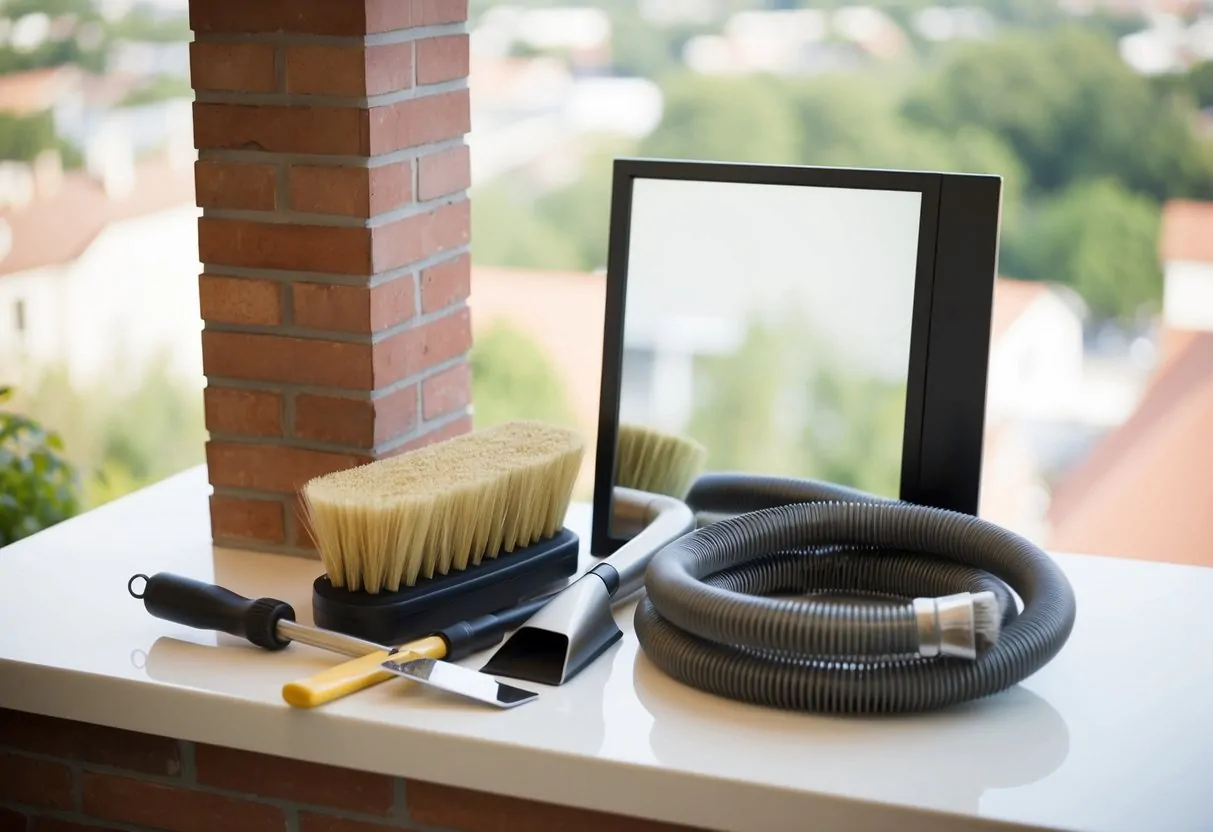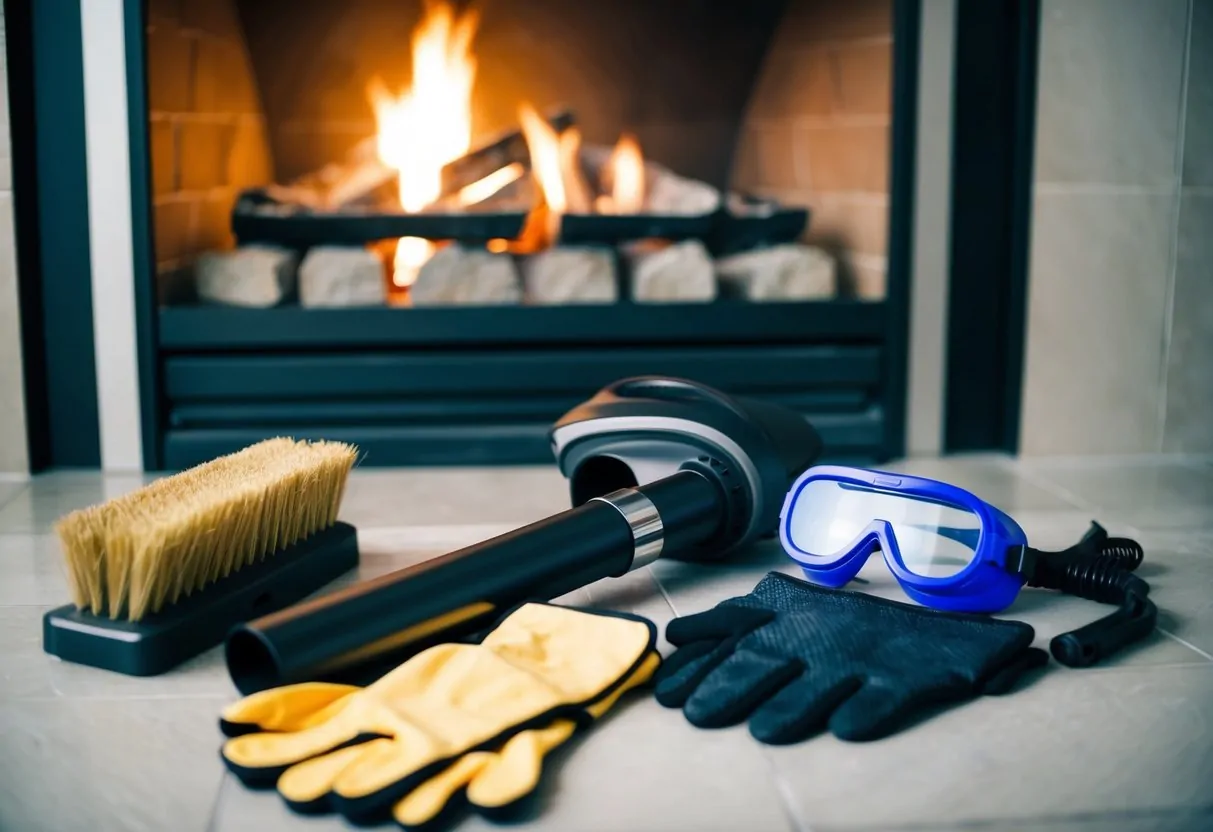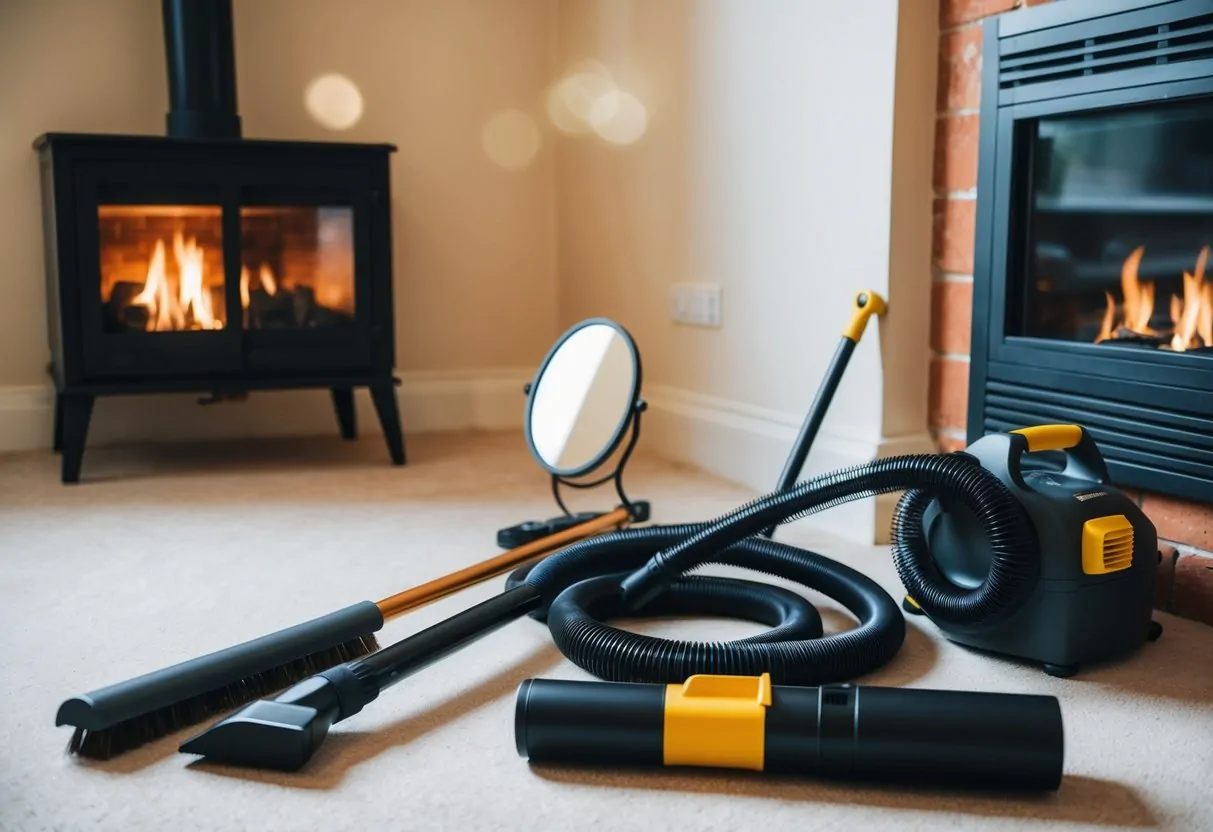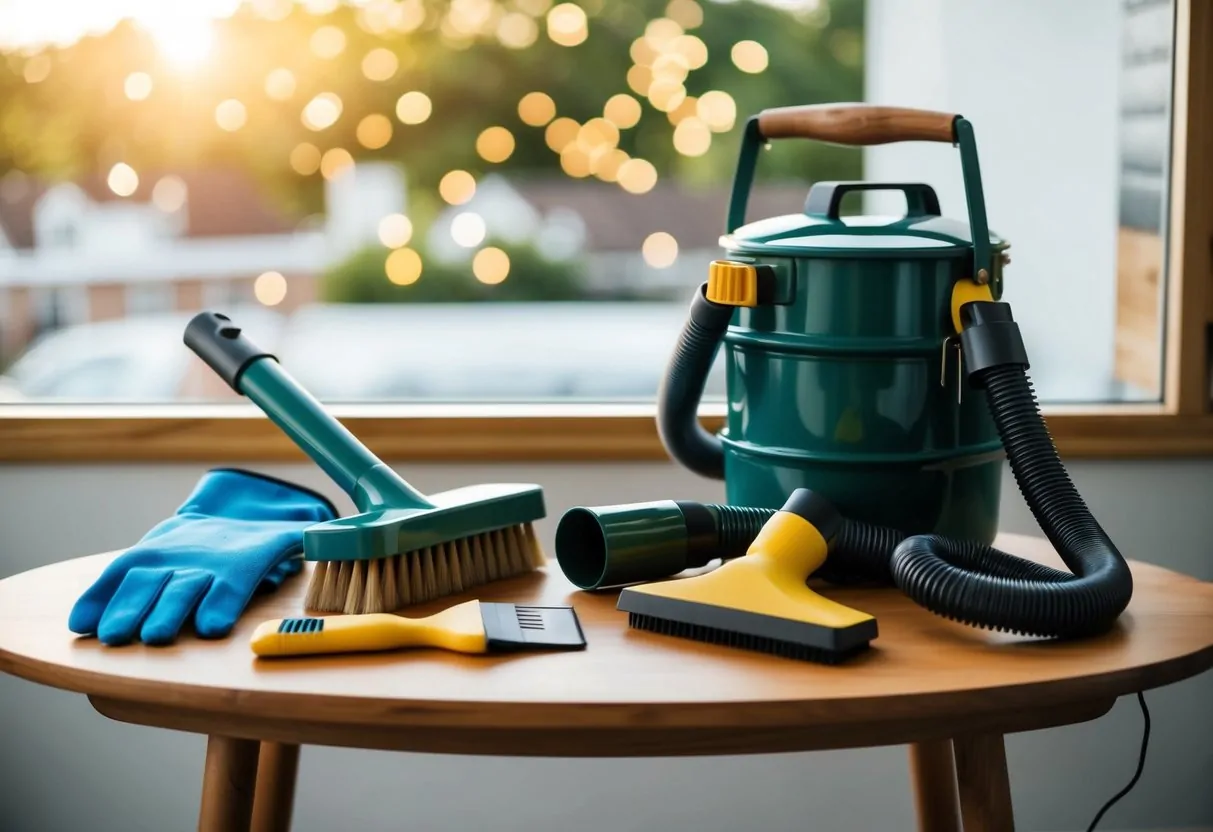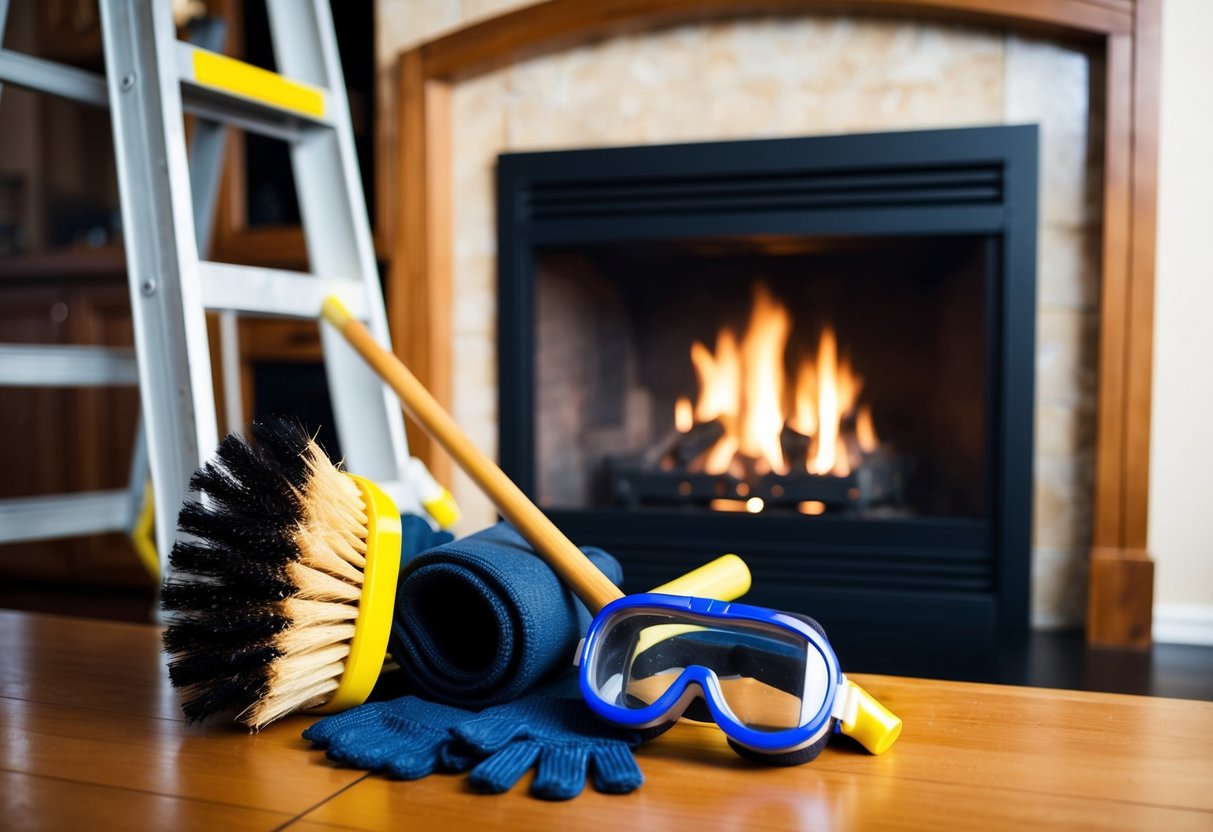Introduction
Regular chimney cleaning is essential for maintaining a safe and efficient home. Knowing the right tools can make all the difference in ensuring a thorough cleaning and avoiding potential hazards. Homeowners often overlook the importance of this maintenance, leading to costly repairs and safety risks.
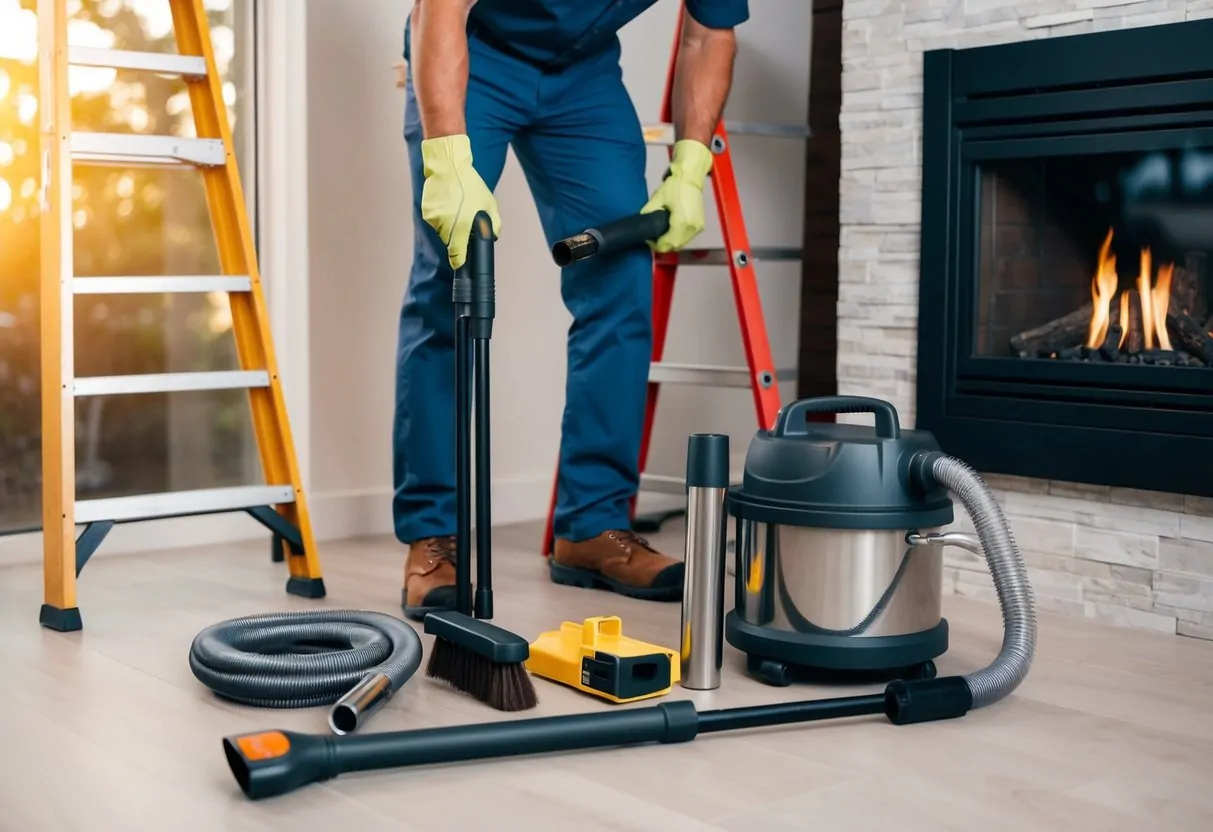
A variety of tools are available that can simplify the cleaning process and enhance its effectiveness. From comprehensive cleaning kits to specialized brushes, understanding what is necessary can empower any homeowner to take action. The following article will explore the top five chimney cleaning tools that everyone should be familiar with.
Key Takeaways
- Regular chimney cleaning prevents hazards and enhances efficiency.
- Essential tools improve the effectiveness of the cleaning process.
- Homeowners can easily maintain their chimneys with the right equipment.
The Importance of Regular Chimney Maintenance
Regular chimney maintenance is crucial for home safety. Accumulation of creosote and soot can lead to dangerous chimney fires. Responsible homeowners prioritize this maintenance to protect their property and loved ones.
Neglecting the chimney increases risks such as:
- Fires: Creosote buildup can ignite and spread quickly.
- Carbon Monoxide Poisoning: Blockages can cause harmful gases to enter the home.
- Structural Damage: Water damage can occur if the chimney isn’t properly sealed.
Chimney inspections should occur at least once a year. This ensures that any potential issues are identified early. Professional services can provide thorough cleaning and maintenance.
Homeowners can also play a role in maintenance by:
- Keeping the area around the chimney clear.
- Using seasoned wood to minimize soot production.
- Ensuring proper ventilation in the fireplace.
These proactive steps contribute to safe and efficient chimney operation. A clean chimney enhances the efficiency of heating systems, which can lead to energy savings as well. Prioritizing chimney maintenance keeps homes safe and functional throughout the heating season.
Comprehensive Chimney Cleaning Kits
Comprehensive chimney cleaning kits provide essential tools for maintaining a safe and efficient chimney. They typically include various products designed to tackle stubborn deposits and ensure thorough cleaning.
Creosote Remover
Creosote remover is a key component of any chimney cleaning kit. It works by breaking down the buildup of creosote, a byproduct of burning wood that can accumulate and pose a fire hazard.
These removers come in two main forms: liquids and powders. Liquid removers are often added directly to the fire, where they vaporize and help eliminate deposits. Powdered versions can be sprinkled on hot coals during a fire to achieve similar results.
Regular use of creosote remover can reduce flammable buildup, making regular cleanings more effective. Homeowners should follow the manufacturer’s instructions regarding frequency and amount to ensure proper use.
Chimney Brush and Rod Set
A chimney brush and rod set are vital for physically removing soot and debris. Brushes vary in size and material, with nylon or stainless steel bristles being common choices.
The rods connect to the brush and allow for extended reach into the chimney. They typically come in telescoping and fixed lengths, enabling users to choose based on their chimney height.
When using a brush and rod set, it is essential to select the right size for the chimney flue. This ensures effective cleaning without damaging the interior. Regular brushing helps maintain performance and safety while minimizing the risk of chimney fires.
Specialized Tools for Thorough Cleaning
To ensure a chimney is properly maintained, specific tools play a vital role. These instruments facilitate a deeper cleaning and inspection process, making it easier for homeowners to identify and remove debris.
Chimney Inspection Mirror
A chimney inspection mirror is an essential tool for checking areas that are not easily visible. This specialized mirror allows homeowners to see the flue and other hard-to-reach sections of the chimney.
Typically designed with an adjustable arm, the mirror can be angled to provide optimal views. This feature helps to reveal buildup, cracks, or blockages that may pose safety risks. Regular inspections using this tool can lead to timely maintenance actions, enhancing the chimney’s longevity.
Using a chimney inspection mirror also aids in assessing the overall condition of the chimney structure. For best results, it should be used in conjunction with a flashlight to illuminate the interior, ensuring nothing goes unnoticed.
Ash Vacuum
An ash vacuum is specifically designed for safely removing ashes from fireplaces and wood stoves. Unlike regular vacuums, it features a heat-resistant construction that can handle warm or cold ashes without damage.
These vacuums come with specialized filters to trap fine ash particles, preventing them from escaping into the air. This ensures a cleaner and healthier home environment. Moreover, many models are equipped with a metal canister that is easy to empty.
When selecting an ash vacuum, homeowners should look for one with a powerful motor and a sturdy hose. This equipment not only simplifies clean-up but also minimizes the mess associated with traditional cleaning methods. Regular use of an ash vacuum can significantly enhance the efficiency of chimney maintenance efforts.
Eco-Friendly Options for Sustainable Upkeep
Maintaining a clean chimney can be done with eco-friendly products that reduce environmental impact. Homeowners have options that effectively clean while also preserving sustainability.
Biodegradable Creosote Remover
Biodegradable creosote removers are designed to break down creosote buildup without harsh chemicals. These products use natural ingredients that are safe for both the environment and indoor air quality.
When applied, they help dissolve stubborn creosote while preventing future accumulation. They work effectively at lower temperatures, making them suitable for use between professional cleanings.
Homeowners should look for certifications indicating the product’s ecological benefits. Using biodegradable options ensures that harmful toxins are absent, protecting both health and the environment. This choice not only enhances chimney performance but also aligns with sustainable living practices.
Safety Equipment for DIY Chimney Cleaning
Proper safety equipment is essential for anyone undertaking DIY chimney cleaning. This ensures protection against potential hazards such as flying debris and harmful particles. Two critical items include protective goggles and gloves, as well as dust masks or respirators.
Protective Goggles and Gloves
Wearing protective goggles is vital when cleaning a chimney. They shield the eyes from soot, dust, and small debris that can become airborne during the cleaning process. Look for goggles that are impact-resistant and provide a snug fit to ensure maximum protection.
Gloves provide crucial hand protection. Opt for durable, chemical-resistant gloves that can withstand contact with soot and other potentially harmful materials. Gloves should also offer a good grip, which is important when handling cleaning tools. Both goggles and gloves enhance safety and comfort, allowing for more efficient cleaning.
Dust Masks or Respirators
Dust masks or respirators are essential for filtering out harmful particles and ensuring clean air intake while working. Inhalation of soot and debris can lead to respiratory issues, making these protective measures necessary.
A basic dust mask may suffice for minimal exposure. However, for deeper cleaning or if the chimney has significant soot buildup, a respirator with a P100 or N95 rating is recommended. This ensures nearly complete filtration of airborne particles. Proper fit is important; it should create a seal around the face to maximize protection.
Frequently Asked Questions
Homeowners often have specific inquiries regarding chimney cleaning tools and their proper use. Addressing these questions can help ensure effective maintenance of chimneys and promote safety during the cleaning process.
What are the essential tools required for DIY chimney cleaning?
The basic tools include a chimney brush, extension rods, a debris pan, and a vacuum. A flashlight and safety goggles can also enhance visibility and protection.
Can chimney cleaning be done effectively without professional help, and with what tools?
Yes, it can be done without professionals. Essential tools include a chimney brush, extension rods, and a vacuum to manage soot and debris.
What safety equipment should homeowners use during chimney cleaning?
Homeowners should use safety goggles, gloves, and a dust mask. A sturdy ladder and a fall protection harness may also be necessary for accessing high chimneys.
How often should chimney cleaning tools be replaced for optimal maintenance?
Chimney brushes should be inspected annually and replaced if bristles are worn. Extension rods should also be checked for damage to ensure safety and efficiency.
Which chimney brush is best for creosote removal in residential fireplaces?
A wire bristle brush is commonly recommended for effective creosote removal. It is designed to penetrate and dislodge heavy deposits.
What are the signs that indicate the need for chimney sweeping tools rather than chemical cleaners?
Signs include significant soot buildup, visible creosote, or difficulty in chimney airflow. In such cases, manual tools are more effective than chemical cleaners.

